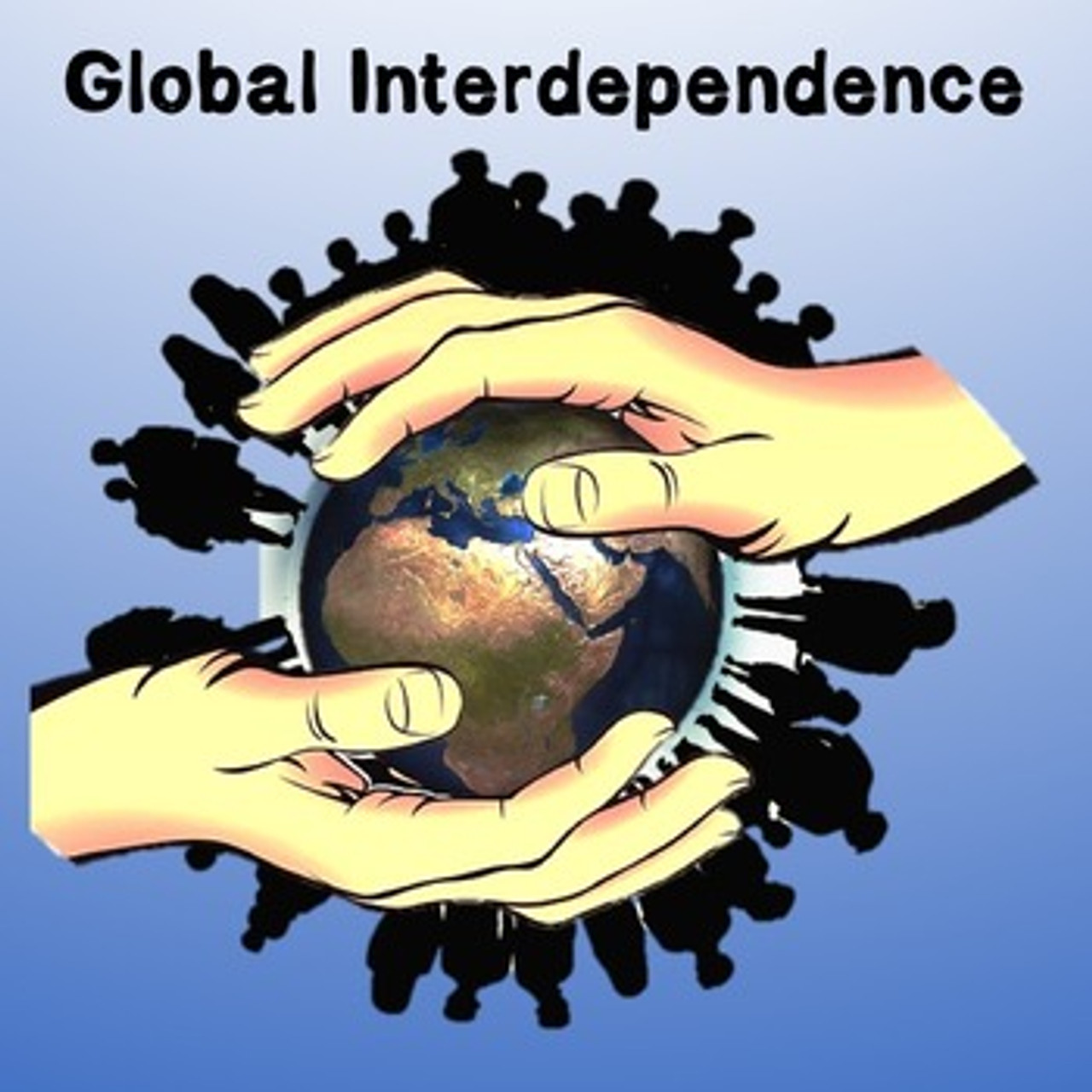Global interdependence is the concept that nations and peoples of different countries or regions are dependent upon each other, either by a single factor or many factors, such as trade, economy or political influence. This may be trans-regional or global, as in a country like China, but it may also be asymmetrical, where one region is more influential than another. It is important to understand the different types of interdependence, so that we can avoid conflicts that arise as a result of them.
Economic interdependence
Economic interdependence is an intense exchange of goods and services between two or more parties. It can also be defined as a relationship between parties that specialize in producing or providing a certain product or service.
The most common manifestation of economic interdependence is international trade. In this case, a country exports a particular good to another country. For example, America produces soybeans. Meanwhile, a neighboring country exports apples.
Another manifestation of interdependence is the transfer of technology across borders. This may include a company’s outsourcing of certain business segments to specialized manufacturers.
There are many different ways of measuring the degree of economic interdependence within a nation. These measures are sometimes costly, though. A higher cost to one country indicates a greater degree of dependence.
Other manifestations of interdependence include the flow of capital, technology, or assets across borders. Interdependence is also measured by the costs incurred by both parties in severing the economic links.
Regional, trans-regional or global
Interdependence is the process by which individuals become linked on a global scale. This process is not only a social and political phenomenon but is also a technological one. The concept of interdependence is important in the study of international politics.
Interdependence is an element in a general systems theory of international relations. A key element in such a system is its ability to function as a whole. Immanuel Wallenstein’s world-systems theory is an example of this.
Interdependence thinking has been largely influenced by the world-systems theory. Among other things, it includes patterned relationships, division of labor, and mutual dependence.
Another important analytical thread in the theorizing of interdependence is integration. In its traditional sense, regional integration is viewed as the process of harmonization of trade policies. But in a complex, interdependent world, this process is not necessarily linear. It can vary depending on the level of regional dynamics.
Asymmetrical interdependence
Global interdependence is an important aspect of world politics. It is defined as situations in which actors’ behavior is dependent on each other. The reciprocal effects of one party’s actions can change the values, needs, and expectations of other parties.
There are several key scholarly approaches to global interdependence. Some are based on economic theory and others are based on transnational relations. These approaches can provide insights into the role of international institutions.
Economic interdependence can work at a dyadic or structural level. Whether it works on a dyadic or structural basis can affect the likelihood of conflict, the level of conflict, and the duration of conflict.
In addition to economic interdependence, there are also other factors that contribute to the likelihood of conflict. Variations in the distribution of power are also important. For example, the power differential between states, the goal of each state, and the asymmetry of the issue areas all contribute to the way power is distributed.
